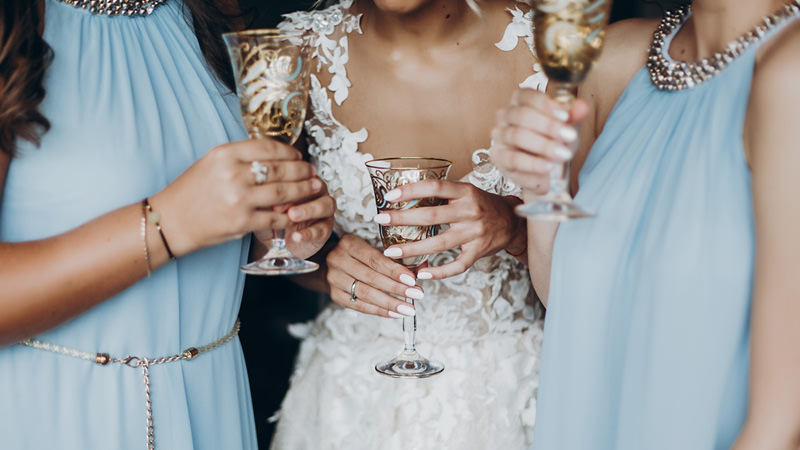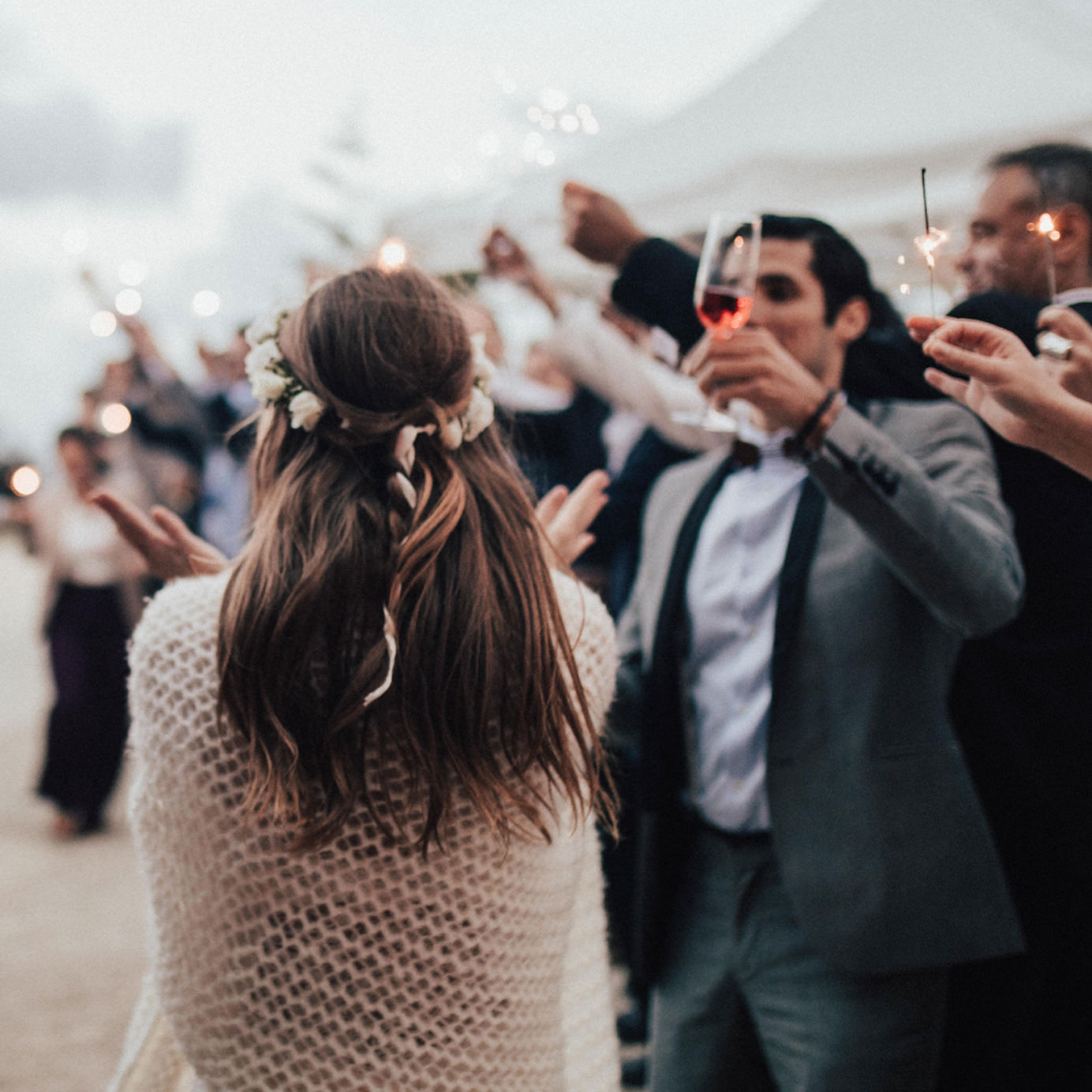From look books to cake tastings, planning a wedding ain’t easy. The devil really is in the details — all 20,000 of them.
Food and drink is one of the most memorable aspects of the big day, but wading through catering menus in search of drink options that demonstrate your “unique couple style” is daunting. The caterers’ “Let us provide the wine and beer!” pitch quickly starts like an easy, satisfying option. After all, you’ve got favors to make and cake cutters to order, right?
Wrong. While caterers do have experience planning weddings and providing bar service, their wine recommendations are a notoriously bad deal, especially if you and yours are wine lovers.
“Caterers will order the cheapest rotgut they can find — it will be horrible wine,” Ed McCarthy, author of “Wine for Dummies,” says. “This includes the ‘Champagne’ appetizer. You can rest assured that they will provide the cheapest sparkling wine they can buy.”
A catering company’s goal is to leave every guest happy, but the one-size-fits-all model and cost structure usually relegates the wine selection to uninteresting, light-bodied whites or fruit-bomb Cabernets without any pedigree or sense of place.
“If you want to offer your guests something very specific — perhaps the wine you shared on a special date or milestone, or wine from a country or even winery you visited together — bringing your own wine can ensure that the beverage selection truly represents you as a couple,” Sarah Tracey, sommelier and beverage director of New York’s Rouge Tomate, says.
Sommeliers know the secrets to securing, sourcing, and serving solid wines at low prices. We polled the experts for four key tips and 20 ideal bottles to upgrade your wedding’s wine.
Embrace Alternative Packaging
Boxes, kegs, and magnums, oh my! At large-scale events, alternative wine packaging is an ideal strategy to suit your budget and your taste buds in one pour.
“I think kegs are ideal for events,” explains Tracey, “If your guests are enthusiastic drinkers, kegs are quick and efficient in terms of service, so your guests will never be waiting for wine. They are easy to transport to remote locations (five-gallon kegs hold the equivalent of 27 bottles of wine!) and equally easy to clean up because you don’t have to deal with empty bottles.”
Large-format bottles, like magnums and three-liter jeroboams, double as fantastic centerpieces and let you provide a truly special wine for your guests.
And don’t worry about blending boxes or kegs into the décor. Boxed wines can be transferred into carafes or served from a large, DIY iced-tea server so guests can help themselves and avoid a crowded bar.
Talk to Your Venue about Your Options
Not all wedding venues allow guests to bring their own wine, so it’s important to make sure yours does.
“Each venue has different licenses and policies, so I would be as direct as possible in your request and find out what’s allowed,” Tracey says. “You will need to work within their parameters, but many venues will be willing to work with you on these special requests.”
And that means being willing to pay a corkage fee if you’re committed to a venue that has a liquor license.
“Most venues that have their own liquor licenses will not allow guests to provide their own wines without some sort of corkage fees, but should not have a problem with a certain number of outside bottles,” says Alexis Iaconis, advanced sommelier of The Restaurant at Meadowood and Barndiva in California’s Napa Valley. “Each venue will have its own corkage policy regarding these bottles and will be able to discuss the best way to integrate these into the beverage package.”
Don’t be afraid to negotiate here — depending on your event, venues may be willing to adjust their fees. Tossing the in-house event coordinator an extra bottle to enjoy always helps, too.
BYO Glassware, Too
Don’t underestimate the effect of good glassware. Depending on the venue, selections will vary widely, with everything from Riedel stemware to plastic cups that make IKEA’s $1 offerings look fancy. (No, seriously.)
“Caterers usually use small, cheap glasses,” McCarthy says, noting that, while the host might enjoy drinking from a Mason jar, many guests prefer a high-quality stemmed glass at an upscale event.
If you’re not shelling out for a traditional venue with a large, in-house glass selection, bring your own or ask to see your caterer’s wine glasses before committing. Any vendor worth its salt shouldn’t have a problem showing you several options, and it ensures your special wine isn’t cheapened by tiny glasses without room to swirl.
As McCarthy points out, “Wine just tastes better in good wine glasses.”
Shop Smart
For large events, it’s always a good idea to look beyond your local shop. Big-box retailers like Costco offer fantastic deals, as do larger liquor distributors.
“My advice is to search out a large, high-volume wine shop with a good Champagne selection,” McCarthy says. “Here in New Jersey, we have a chain called Bottle King. They always carry some obscure Champagnes in the $25 to $30 bracket.” That might seem expensive, but going big for a toast or cocktail hour is an excellent way to set the tone on the big day.
“Your toasts are among the most memorable moments of your celebration,” Tracey adds, “and many caterers may have limited wine choices they supply to please the broadest audience possible, and not to fit specialty niches.”
Fortunately, several large digital retailers like Vivino and Wine Library have lower prices and multi-bottle or case discounts that make shopping for high-quality wines for a 100-to-200-guest event a (comparative) breeze. Many venues will accept wine shipped directly from an online retailer as well, removing an additional step for busy couples.
“We usually plan on a half-bottle per guest in addition to the cocktails and beer that are also offered,” Iaconis says.
Or, if your wedding is a wine-only fête (and who doesn’t love that?), Tracey recommends a larger order. “I always go by the metric of two glasses per person, per hour,” she says. “It’s generally spot on.”

Bottles to Try:
Sparkling
Raventos I Blanc Rose de Nit, Cava, $24
Iron Horse Wedding Cuvee, Russian River Valley, $35
Alfred Gratien Brut, Champagne, $53
White
Aveleda Quinta da Aveleda, Portugal, $8
King Estate Pinot Gris, Oregon, $17
Quivira Sauvignon Blanc, California, $17
Leo Steen Chenin Blanc, California, $20
Roserock Chardonnay, Oregon, $32
Rosé
Bieler Pere et Fils Sabine, Provence, $13
Gérard Bertrand Cotes des Roses 2016, $15
Sidebar Rosé, Russian River Valley, $17
Brick & Mortar Rosé, Napa Valley, $21
Bridge Lane Rosé, Long Island, $240 (19.5L Keg)
Red
Vina San Pedro 1865 Pinot Noir, Chile, $17
Vietti Barbera d’Asti, Italy, $18
